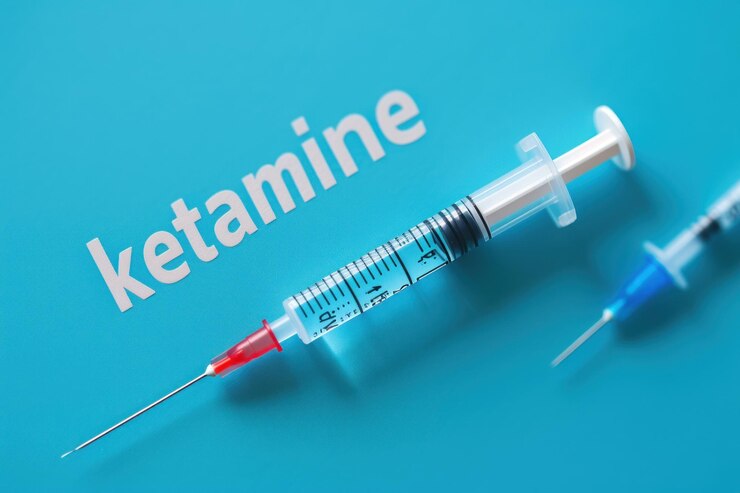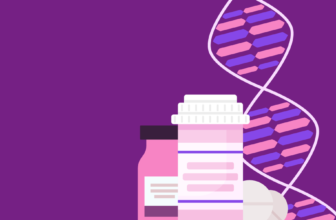
[adinserter block=”3″]
Have you ever wondered about the medicines doctors use to help with severe pain? One such medicine is ketamine, but a lot of people get confused and ask, Is ketamine an opioid? It’s a question that pops up often, especially when we talk about managing pain in hospitals or clinics.
Understanding what kind of drug is ketamine, and whether or not it’s an opioid, is really important because knowing the difference helps us understand how it works for pain and why doctors might choose it over other medicines.
Ketamine is actually used for a lot of things, from helping with pain to making someone feel relaxed before surgery. But with so many medicines out there, it’s easy to get mixed up or worry about what’s being given for pain relief.
So, if you’re curious about ketamine and want to learn more about its role in pain management, keep reading to discover the facts.
Is Ketamine An Opioid? Key Differences Between The Two
Understanding what kind of drug is ketamine helps clear up a lot of confusion. Ketamine is a dissociative anesthetic. This means it can make you feel detached from your pain and the environment around you, sort of like being in a dream.
It is used by doctors for pain relief and in some cases, to make patients feel relaxed before surgery. Now, a common question is, Is ketamine an opioid? Well, the straight answer is no, ketamine is not an opioid.
Let’s look at a simple comparison between ketamine and opioids to understand the major differences between them:
|
Feature |
Ketamine |
Opioids |
|
Classification |
Dissociative Anesthetic |
Pain Relief Medicine |
|
Primary Use |
Pain relief, sedation, and sometimes in depression treatment |
Pain relief, often for moderate to severe pain |
|
How It Works |
Changes the way the brain perceives pain by making you feel detached from your body |
Binds to specific receptors in the brain to reduce the sensation of pain |
|
Side Effects |
Can cause disconnection feelings, changes in how you see or hear things, and sometimes dizziness |
Can lead to drowsiness, constipation, addiction, and in some cases, overdose risk |
Ketamine and opioids work in very different ways and are used for different types of pain management. Ketamine offers an alternative for pain relief without the risk of addiction that comes with opioids. This makes it an important option for doctors and patients looking for effective pain management solutions.
Also Read: Ketamine Infusions: How It Works And What Are The Benefits
Types of Ketamine and Their Uses
Many people ask, “Does ketamine come in pill form?” Yes, ketamine can come in different forms including pills, although it’s more commonly given in other ways in hospitals or clinics. Each form of ketamine has its own specific use and benefits, depending on what it’s being used for.
- Intravenous IV Ketamine: This is the most common form used in hospitals. It’s given directly into your veins and works quickly to relieve pain or to sedate you before surgery. It’s fast-acting, which makes it really useful in emergencies or when immediate pain relief is needed.
- Nasal Spray: Ketamine nasal spray is used for treating severe depression and certain pain conditions. It’s easier to use than IV ketamine and can be administered under supervision outside of a hospital setting.
- Pill Form: Does ketamine come in pill form? Yes, ketamine does come in pill form, but this is less common. The pills are used mainly for pain management and are usually considered when other forms of ketamine are not suitable. The effect of the pill form can take longer to feel because the ketamine needs to pass through your digestive system first.
Now, when we talk about ketamine, it’s also important to mention that there are two types of ketamine. These two types have different effects on the brain and are used for different research purposes and treatment plans.
- Racemic Ketamine: This is the most common type, a mix of two mirror-image molecules. It’s used in most medical treatments and research because of its effective pain relief and antidepressant properties.
- Esketamine: This is one of the two types of ketamine, specifically the “S” molecule. It’s used mainly in nasal spray form for treating depression and has been the subject of a lot of recent medical research.
Understanding these two types of ketamine is crucial for medical research and determining the most effective treatment plans for pain and depression.
Also Read: Is Ketamine Addictive: Symtpoms, Works And Side Effects
Ketamine in Pain Management
Is ketamine an opioid? How is ketamine used? Despite its complex mechanisms, ketamine is not classified as an opioid. Its primary function as a N-methyl-D-aspartate NMDA receptor antagonist is crucial to its role in pain management. This sets it apart from opioids, which primarily affect the brain’s opioid receptors.
When addressing how ketamine is used in pain management, several applications come to light. Ketamine treatment includes acute and chronic pain, allowing for another option when people do not respond well to opioids or are at risk of becoming dependent on them.
To manage chronic pain, provide analgesia for painful procedures, offer preventive analgesia during surgery, manage acute pain in patients with high opioid tolerance, and treat chronic pain conditions are some examples of how ketamine is put to use.
The question “Is ketamine an opioid?” has been questioned further by recent studies that attempt to explore how the drug interacts with the brain’s opioid receptors. A study conducted by Stanford University suggests that ketamine may trigger these receptors similarly to traditional opioids.
However, this does not categorize it as one because of its distinct mechanism and broader clinical uses over activating those receptors exclusively.
Also Read: Navigating the Journey: What To Expect During Ketamine Therapy Sessions
The Recreational Use of Ketamine and Its Effects
While many know ketamine for its medical application in pain management, others use it recreationally – raising concerns among health professionals who argue that there are risks involved without proper guidance from a doctor.
A lot of people use it for fun because it can make them feel like they’re detached from their body or experiencing a different reality – but what does ketamine high feel like? And why wouldn’t someone want to use this substance outside of a medical context?
What Does Ketamine High Feel Like?
If you ask someone who has done recreational drugs before about the sensations after using ketamine, they might tell you that they felt like they were floating away from their body, or in a state of the “K-hole.”
The “K-hole” is a slang term used to describe the sensation. These experiences include visual and auditory hallucinations, calmness or detachment from the environment, and distorted time and space perception.
Despite these effects that some might find appealing, it’s important to note that using ketamine recreationally can also cause confusion, disorientation, and loss of coordination which could be dangerous.
Risks Associated with Non-medical Use of Ketamine
Using ketamine without medical guidance poses risks. Frequent or high doses can cause severe bladder problems known as ketamine bladder syndrome – resulting in pain and difficulty urinating.
Ingesting it for an extended period may impair memory, lead to dependency as well as increase the risk of mental health issues like depression and anxiety. Driving or operating heavy machinery under the influence of this substance can be particularly dangerous because of its dissociative effects that impair motor functions.
Understanding Recreational vs. Therapeutic Use
To make informed health decisions regarding ketamine use, it’s important to differentiate between recreational and therapeutic use.
Under close supervision by medical professionals, low doses are administered therapeutically for specific conditions such as depression or chronic pain – minimizing harm while maximizing benefits. Alternatively, recreational use lacks these safeguards thus heightening risks significantly.
The Future of Ketamine in Medicine
Researchers are uncovering new ways this drug could help with mental health conditions like depression and PTSD (Post-Traumatic Stress Disorder), offering hope to many who haven’t found relief with traditional treatments. Let’s explore what the future might hold for ketamine’s role in treating these challenging conditions.
Treating Depression
Depression is a common but serious mood disorder that affects millions of people worldwide. Traditional antidepressants don’t work for everyone, and this is where ketamine steps in as a promising alternative.
Unlike most antidepressants that take weeks to start working, ketamine can lift mood in hours or even minutes. It works differently, targeting the NMDA receptors in the brain, leading to rapid changes in mood and thought patterns.
Managing PTSD (Post-traumatic stress disorder)
PTSD is another area where ketamine shows great promise. This condition can develop after a person has experienced a terrifying event, leaving them with ongoing severe anxiety and flashbacks. Traditional PTSD treatments involve therapy and sometimes medications, but not everyone finds relief with these methods.
Ketamine could change the game for PTSD treatment. Studies suggest that ketamine may help lessen the symptoms of PTSD by creating new pathways in the brain, allowing patients to form new, positive memories and reduce the impact of traumatic ones.
This could potentially help those suffering from PTSD to recover more quickly and effectively than with current treatments.
Beyond Pain Management
Ketamine’s journey from a pain management drug to a potential breakthrough in mental health treatment is remarkable. Its ability to act quickly and differently from traditional medications opens up new avenues for research and treatment strategies.
As we understand more about how ketamine works, we could see it being used for a broader range of conditions, possibly including anxiety disorders, addiction, and even obsessive-compulsive disorder OCD.
Also Read: Is Ketamine Therapy Right For You? A Guide To Ketamine Treatment Eligibility
Final Thoughts
The question Is ketamine an opioid? is a common one among patients exploring pain management options. The answer is no, ketamine is not an opioid. Its use in pain management represents a significant shift in how doctors approach the treatment of chronic pain.
By targeting pain through a different mechanism, ketamine offers benefits that traditional opioids cannot, such as a lower risk of addiction and the ability to treat certain types of pain more effectively.
As research continues and more clinical trials are conducted, the understanding of how ketamine can be used in pain management will grow. For now, it stands as a promising option for patients seeking relief from chronic pain without the risks associated with opioids. Simple and straightforward, the message is clear: ketamine offers a different path to pain relief, one that could change lives for the better.
For those interested in exploring ketamine’s therapeutic possibilities or seeking help for its misuse, consulting with a healthcare professional is the most effective way to ensure safe and informed decisions. Your health and well-being are important, and professional guidance is invaluable in securing the best possible outcomes.
[adinserter block=”3″]
Credit : Source Post






